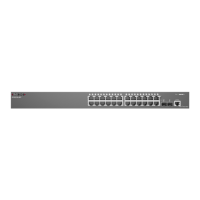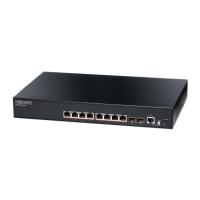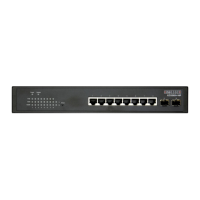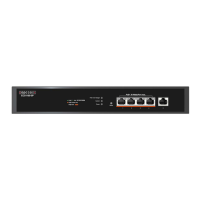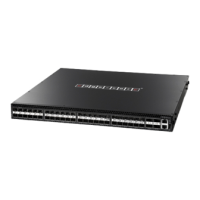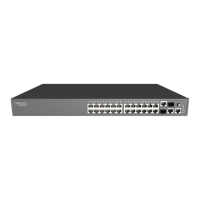Chapter 10
| Access Control Lists
MAC ACLs
– 341 –
tagged-802.3
– Tagged Ethernet 802.3 packets.
untagged-802.3
– Untagged Ethernet 802.3 packets.
any
– Any MAC, IPv4 or IPv6 source or destination address.
host
– A specific MAC, IPv4 or IPv6 address.
source – Source MAC, IPv4 or IPv6 address.
destination – Destination MAC, IPv4 or IPv6 address.
address-
bitmask
6
– Bitmask for MAC address (in hexadecimal format).
network-
mask
– Network mask for IP subnet. This mask identifies the host
address bits used for routing to specific subnets.
prefix-length - Length of IPv6 prefix. A decimal value indicating how many
contiguous bits (from the left) of the address comprise the prefix; i.e., the
network portion of the address. (Range: 0-128)
cos – Class-of-Service value (Range: 0-7)
cos-bitmask
6
– Class-of-Service bitmask. (Range: 0-7)
vid – VLAN ID. (Range: 1-4094)
vid-bitmask
6
–
VLAN bitmask. (Range: 1-4095)
ethertype – A specific Ethernet protocol number. (Range: 0-ffff hex)
ethertype-bitmask
6
– Protocol bitmask. (Range: 0-ffff hex)
time-range-name - Name of the time range. (Range: 1-32 characters)
Default Setting
None
Command Mode
MAC ACL
Command Usage
◆
New rules are added to the end of the list.
◆
The
ethertype
option can only be used to filter Ethernet II formatted packets.
◆
A detailed listing of Ethernet protocol types can be found in RFC 1060. A few of
the more common types include the following:
■
0800 - IP
■
0806 - ARP
■
8137 - IPX
◆
If an Extended IPv4 rule and MAC rule match the same packet, and these rules
specify a “permit” entry and “deny” entry, the “deny” action takes precedence.
6. For all bitmasks, “1” means relevant and “0” means ignore.

